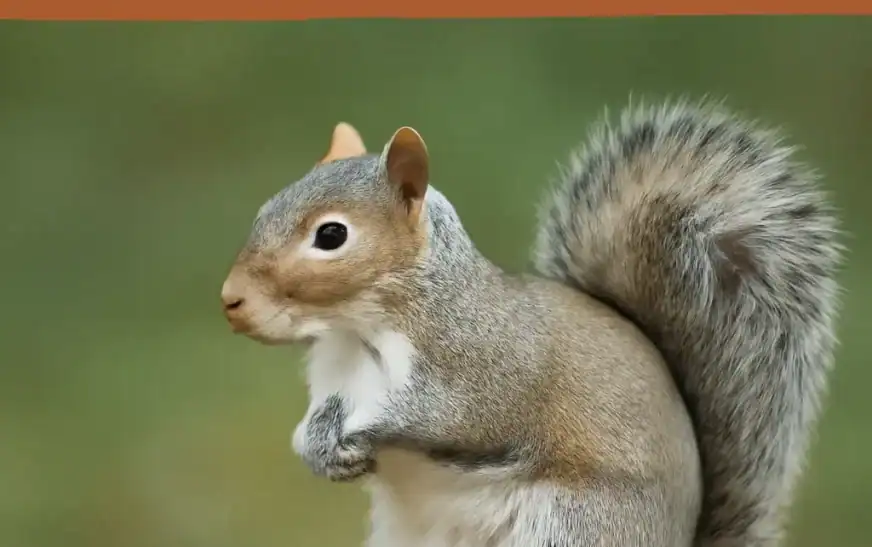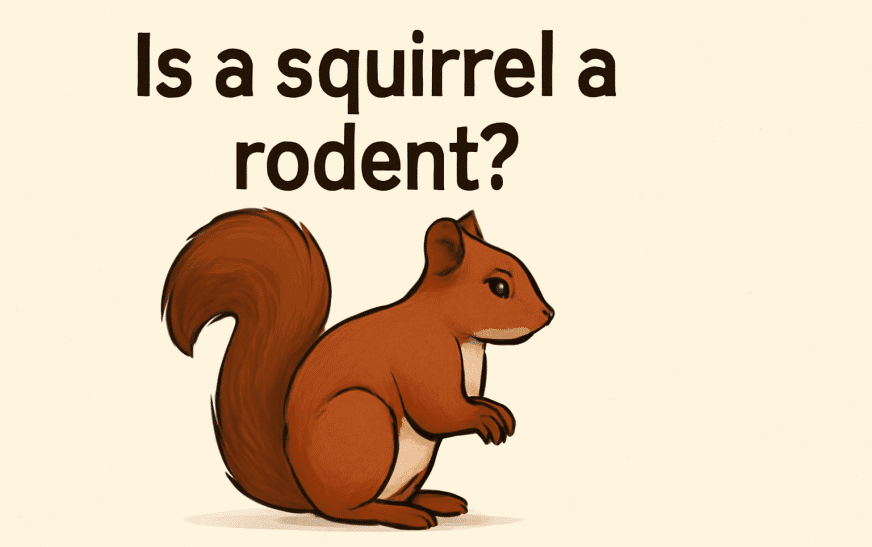Squirrels are some of the most common animals you’ll encounter in parks, forests, and even urban areas. With their agile movements and curious personalities, it’s easy to become fascinated by these little creatures. But one question often pops up: Are squirrels nocturnal? In this article, we’ll explore the sleep habits of squirrels, breaking down their activity patterns and how they adapt to their environments—particularly in Houston, Texas.
What Does “Nocturnal” Mean?
Before we get into the specifics of squirrels, let’s clarify what “nocturnal” actually means. Nocturnal animals are most active during the night. They typically rest during the day, avoiding the sunlight and making the most of the quieter, cooler nighttime hours. Nocturnal creatures have adapted to this lifestyle for various reasons, such as evading predators and avoiding the daytime heat.
But does this describe squirrels? Let’s take a closer look.
Are Squirrels Nocturnal? The Truth Behind Their Activity Patterns
The short answer is: No, squirrels are not strictly nocturnal. In fact, squirrels are primarily diurnal, which means they are active during the day. Let’s break down how squirrels behave throughout the day and night.
Daytime Behavior
Squirrels are typically active during the day, especially in the morning and late afternoon. They spend their time foraging for food, climbing trees, and interacting with other squirrels. In urban areas like Houston, Texas, you may often spot them in parks like Hermann Park or Buffalo Bayou Park as they search for food, such as acorns and nuts.
Squirrels are opportunistic feeders, meaning they gather food when it’s available, especially in places with abundant resources. In Houston, where squirrels are often seen in trees or hopping across playgrounds, you might even see them gathering food early in the morning or just before sunset.
Twilight Activity: Dawn and Dusk
While squirrels are not truly nocturnal, they can show increased activity during dawn and dusk. These are known as the crepuscular hours, a time when many animals—squirrels included—are active. During these hours, squirrels may be more active in urban environments to avoid potential predators and human activity.
Suppose you live in an area like Discovery Green or Memorial Park in Houston. In that case, you might notice squirrels running around during these twilight hours. This behavior is more common in tree squirrels, who may search for food or interact with their surroundings.
Nighttime Behavior
At night, squirrels typically retreat to their nests, which are called dreys. These nests are usually found high up in trees where they sleep and rest. Unlike nocturnal animals like owls, squirrels are not adapted to nighttime activity—they don’t have enhanced night vision or nocturnal behaviors that help them thrive in the dark.
That being said, squirrels may still venture out at night in certain circumstances. For example, if food is scarce or if they live in an area where nighttime predators aren’t a concern, squirrels may make rare foraging trips under the cover of darkness.
Why Do People Think Squirrels Are Nocturnal?
It’s easy to confuse squirrels with nocturnal animals, especially because they sometimes appear active at twilight. Urban squirrels, in particular, may adapt their behavior to avoid daytime activity and spend time gathering food at dusk or early in the morning. This might lead some people to believe they are more active at night.
Additionally, squirrels’ occasional activity after sunset can contribute to the myth. But despite these behaviors, squirrels generally follow a diurnal schedule, making them much more active during the day.
What Affects Squirrel Behavior in Houston?
In a bustling city like Houston, squirrel activity is influenced by various factors that affect their daily routine. These factors help explain why you might see squirrels in action at unusual times of the day:
- Food Availability: In urban parks and wooded areas like Memorial Park or Hermann Park, food is abundant. When food is plentiful, squirrels remain active during daylight hours, gathering acorns, seeds, and other food. However, during leaner times, they might increase their twilight activity.
- Predator Avoidance: In urban environments, squirrels may adjust their schedules to avoid potential predators. For example, squirrels might stay hidden during the midday hours when humans and larger animals are more active, and instead become more active at dawn and dusk.
- Weather Conditions: In Houston, where summers can be hot, squirrels may limit their daytime activity to avoid the heat. During the cooler hours of the morning or evening, squirrels will emerge to forage for food or socialize with other squirrels.
Types of Squirrels in Houston and Their Activity Patterns
There are several types of squirrels in Houston, each with its own unique behaviors:
- Eastern Grey Squirrel: These are the most common squirrels in Houston, and they are active during the day. You’ll see them climbing trees and searching for food in urban areas and parks. They sleep at night in their nests high in the trees.
- Fox Squirrel: These larger squirrels also follow a diurnal pattern, often seen in open woodlands and parks. Like the Eastern Grey, they forage during the day and rest at night.
- Flying Squirrel: The flying squirrel is more nocturnal compared to the others. However, it can be seen during the day in places like Hermann Park or Buffalo Bayou Park, especially if they are disturbed. Flying squirrels glide from tree to tree, typically more active after dusk.
How Squirrels Adapt to Seasonal Changes in Houston
During the colder months, squirrels enter a state of torpor, which is a light form of hibernation. This behavior helps conserve energy when food is less available. However, squirrels don’t hibernate completely. They remain active in their nests, waking up occasionally to eat or adjust their position.
In Houston, where winters are milder, squirrels may not sleep continuously through the winter. Instead, they reduce their activity, spending most of the time in their nests during the coldest periods.
Conclusion: Are Squirrels Truly Nocturnal?
Squirrels are not nocturnal animals. They are primarily diurnal, meaning they are most active during daylight hours. While they can show some increased activity during dawn and dusk, they generally rest at night in their nests, high in the trees.
In places like Houston, squirrels adapt their schedules based on food availability, predator presence, and weather conditions. While some species, like the flying squirrel, are more nocturnal, most squirrels prefer the daytime for foraging, gathering food, and interacting with their environment.
Frequently Asked Questions (FAQs) about Squirrel Behavior
No, squirrels are not nocturnal. They are primarily diurnal creatures, meaning they are most active during the day. While they may exhibit some activity during the early morning or late evening (twilight hours), they generally rest at night in their nests.
Squirrels may appear active during the dawn and dusk hours, also known as crepuscular times, when it’s quieter and cooler. This behavior helps them avoid predators and reduce competition for food. In urban areas like Houston, squirrels often adjust their activity based on local conditions.
Squirrels sleep in dreys, which are nests they build high in trees. These nests are made from twigs, leaves, and other materials. They provide shelter and safety from predators during the night.
Squirrels don’t fully hibernate. Instead, they enter a state called torpor, a lighter form of hibernation. During colder weather, squirrels may reduce their activity and spend more time in their nests to conserve energy. However, they still wake up periodically to eat or adjust their position.
In Houston, you can find a few different types of squirrels:
Eastern Grey Squirrels: Common in parks and urban areas, these squirrels are active during the day.
Fox Squirrels: These larger squirrels prefer open woodlands and are also diurnal.
Flying Squirrels: These are more nocturnal but can sometimes be seen during the day, especially if disturbed.
Yes, flying squirrels are more nocturnal compared to other squirrels. They are most active at night, using their gliding abilities to move between trees. However, they can sometimes be seen during the day, especially in areas like Hermann Park in Houston.
Yes, squirrels have adapted well to urban environments. In Houston, they often live in parks and wooded areas, where they can find plenty of food and shelter. Urban squirrels have become more crepuscular, being active at dawn and dusk to avoid human activity and predators during the day.
In Houston, squirrels prepare for winter by gathering food like nuts and seeds. They often store this food in hidden locations to ensure they have enough supplies during the colder months. Squirrels do not hibernate but reduce their activity and spend more time in their nests during extreme cold.
Squirrels are generally not dangerous to humans. However, they may become aggressive if they feel threatened or cornered. It’s important to avoid approaching or attempting to feed them. Squirrels can also carry diseases like rabies and Lyme disease, though these are rare.
If you want to attract squirrels to your Houston backyard, try planting nut-bearing trees, such as oak or walnut trees, which provide natural food. Additionally, you can offer squirrel-friendly snacks like sunflower seeds, peanuts, or corn. Make sure you have plenty of trees and shrubs for shelter and nesting.
Squirrels gather food in the fall to prepare for the colder months when food becomes scarce. They often store nuts and seeds in various places, a behavior known as caching. This ensures they have enough to eat during the winter, even when they can’t forage as easily.












